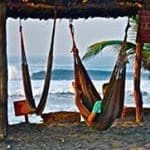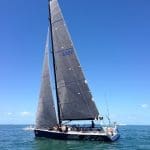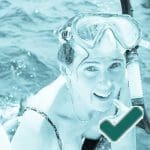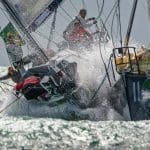Glossary of Nautical Terms | Learning the Language of Sailing
Why Knowing Nautical Terms and Abbreviations is so Important
Glossary of Nautical Terms
Learning the Language of Sailing
Why It Matters — Especially for New Crew
Joining a boat for the first time can feel like entering a secret club. Everyone seems to know where to stand, what to pull, and what the skipper means when they shout “ease the jib!” If you’re standing there wondering why no one just says “pull the red and white rope,” you’re not alone. We’ve all been there — and no one expects you to know it all on day one. But knowing even a few of the right terms can change everything.
Most of the time, sailing is relaxed and social — but not always. Things can move fast: winds shift, moorings get tight, and that peaceful bay gets busier than you expected. In those moments, good communication keeps everyone safe and confident. That’s why sailors use short, specific words for things. It’s not about being fancy or traditional — it’s about speed, clarity, and making sure everyone’s on the same page, even when the wind picks up and voices get lost in the noise.
This isn’t about learning jargon for the sake of it. It’s about being part of a team. When you understand the difference between a sheet and a halyard, or why a line isn’t just “a rope,” you’re able to respond, help out, and feel included. It’s empowering. Suddenly, you’re not just a passenger — you’re part of the crew, part of the rhythm, and part of the solution when things get interesting – that;s when knowing your glossary of nautical terms gets interesting
And let’s be honest — it’s satisfying. There’s a quiet pride in knowing your clew from your cleat, or tossing a bowline that actually holds. It makes the whole experience richer. You’re not just floating on the sea; you’re engaging with it. You’re learning a skill set that connects people across oceans, generations, and cultures — because these terms are used from the Solent to the Seychelles.
So consider this your launchpad. The A–Z Glossary of Nautical Terms below breaks down the words and phrases you’re most likely to hear on board. Some are practical, some are quirky, and a few might just make you smile. But all of them are here to help you feel confident, capable, and ready for your next sailing adventure — whether you’re joining a flotilla, stepping onto a charter yacht, or just figuring out which line to pull.
Use this guide not just to plan what to bring, but to understand how provisioning works aboard Greek charters and how to think like a seasoned skipper.
Charter Payment Protection
Insolvency Protection
Safe Payment
Muti-Currency. Lossless Forex
Low Price Guarantee
Exclusive Deals No Hidden Fees
Top 10 Things to know about learning sailing terms.
Top 10 Things to Know About Learning Sailing Terms in our Glossary of Nautical Terms
Glossary of Nautical Terms. Just starting out? Don’t worry — every experienced sailor once asked, “Why not just say ‘pull the rope’?” To help you get your bearings, here’s a practical top 10 list — the core concepts that make understanding sailing lingo easier, faster, and way less intimidating. Think of this as your warm-up: later in this guide, we’ll dive deeper into the A–Z terms and how to actually use them on board.
- “Ropes” are called “lines.” Except when they’re not. (There’s one actual “rope” on most boats — the bell rope.)
- Every line has a job and a name. Jib sheet, halyard, vang, painter — these aren’t just fancy terms; they tell you what each line does.
- “Port” and “starboard” never change. Port is always the left side of the boat *when facing forward*. This avoids confusion when giving directions.
- Boats don’t have walls, they have “bulkheads.” And don’t call it the floor — it’s the “sole.” These terms matter when someone needs help quickly.
- The “head” is the toilet. You’ll thank us later.
- “Sheet” doesn’t mean a sail. It’s the line that controls the trim of a sail — not something you sleep under.
- “Tacking” and “gybing” are different maneuvers. One turns the bow through the wind, the other turns the stern. Know which is which — and when to duck!
- “Helm” is where you steer from. It can refer to the wheel or tiller, or even the person steering.
- Most commands are short on purpose. “Ease,” “trim,” “sheet in” — they sound abrupt but save time and reduce mistakes.
- You’re not expected to know it all — but learning shows respect. Skippers notice when you’re trying. It builds trust, teamwork, and confidence.
We’ll explain these more fully throughout the glossary below, with examples of how each term is used, when it matters, and why it helps you feel more at home on the water — faster.
Glossary of Nautical Terms – Key Terms and Abbreviations Explained
Your essential A–Z guide to sailing terminology, perfect for beginners and charterers
Aback: When a sail is pushed backward against the mast by the wind, typically when the wind is coming from the wrong direction. This can be accidental or used intentionally to slow the boat.
Abaft: Toward the rear (stern) of the boat. A relative term meaning “behind” when facing forward.
Abeam: At a right angle to the boat’s centerline — directly off to the side, either port or starboard.
Aft: Located near, toward, or in the direction of the stern (rear) of the vessel.
A-hull: A storm tactic where all sails are taken down and the helm is secured leeward, allowing the boat to drift freely with minimal control.
AIS (Automatic Identification System): A safety system that uses transponders to broadcast and receive data about vessel position, course, speed, and identity, helping avoid collisions.
Amidships: The central area of a vessel, both side-to-side (athwartships) and end-to-end (fore-and-aft).
Anchor: A heavy object lowered to the seabed on a chain or rope to keep the boat from drifting due to wind or current.
Apparent Wind: The wind felt on a moving boat, combining the true wind and the wind generated by the boat’s motion.
ARPA (Automatic Radar Plotting Aid): A radar system that automatically tracks nearby vessels, calculating their movement to assist with safe navigation.
Astern: Behind the boat, or the direction toward the stern. To go astern means to move in reverse.
Athwartships: At right angles to the boat’s centerline — across the width of the vessel.
Azimuth: The angular measurement between true north and the direction to a celestial object or other target, measured clockwise around the horizon — used in navigation and bearing calculations.
Back: When the wind shifts counterclockwise (in the Northern Hemisphere). Opposite of veering.
Back a Sail: To sheet a sail so that the wind fills it on the side normally leeward, pushing the boat backward or helping to slow or stop it.
Backstay: A support cable running from the top of the mast to the stern, preventing the mast from moving forward.
Baggywrinkle: Soft, frayed rope padding wrapped around rigging to prevent sails from chafing.
Ballast: Weight placed low in the boat or keel (often lead or iron) to improve stability.
Ballast Keel: A heavy keel attached to the hull, increasing stability and reducing the risk of capsizing.
Batten: A flexible strip inserted into a sail’s leech pocket to support its shape and roach.
Beam: (1) The widest part of a boat; (2) a structural support running across the hull; (3) “On the beam” means directly to the side of the vessel.
Bear Away: To steer the boat away from the wind, usually to a broader point of sail.
Bearing: The direction from the observer to an object, measured in degrees from true or magnetic north.
Beat: To sail upwind by tacking back and forth in a zigzag course.
Belay: To secure a rope to a cleat or pin with a knot so it holds fast.
Bend: (1) To attach a sail to a spar; (2) to join two ropes using a knot.
Berth: (1) A mooring place in a harbor; (2) a sleeping space aboard a vessel.
Bight: A slack loop in a rope, useful for making knots.
Bilge: The lowest part inside the hull where water collects.
Block: A pulley enclosed in a casing, used to redirect or multiply force on a rope.
Boot-topping: A painted stripe separating the antifouling bottom paint from the topside finish.
Broach: A sudden, uncontrolled turn of the boat broadside to the wind and waves, risking capsize.
Broad Reach: A point of sail with the wind coming from behind the beam but not directly aft.
Bulkhead: A vertical wall inside a boat that divides compartments and adds structural strength.
Cable: A nautical unit of distance equal to one-tenth of a nautical mile. Roughly 185 metres or 200 yards.
Centre-board: A retractable keel or fin that can be lowered through a slot in the hull to reduce sideways drift (leeway), especially useful when sailing upwind.
Centre-line: The imaginary line running lengthwise down the middle of the boat from bow to stern.
Chart Datum: The baseline reference level for depths on nautical charts. Soundings are measured from this level, which is usually the lowest predicted tide. It varies by region.
Claw Ring: A circular metal fitting that slips over the boom, typically used for attaching the mainsheet after the sail has been reefed.
Cleat: A fitting — often made of metal, wood, or plastic — used to secure a rope by wrapping it in a figure-eight pattern.
Clew: The lower aft corner of a sail where the foot meets the leech. It’s usually the point where control lines like the sheet attach.
Close-hauled: The point of sail where a boat is sailing as directly into the wind as possible (typically around 30–45° off the wind).
Close Reach: A point of sail between close-hauled and beam reach, where the wind is forward of the beam.
Close-winded: Describes a boat capable of sailing very close to the wind with minimal leeway.
Course: The direction in which a vessel is steered or intended to travel, usually measured in degrees relative to true or magnetic north.
Cringle: (1) A reinforced eyelet in a sail used for reefing or attaching lines; (2) A loop of rope at the end of reef points.
Dead Run: A point of sail where the wind blows directly from astern, aligned with the boat’s centre-line. It is often less stable than a broad reach.
Deviation: The error introduced to a magnetic compass reading by local magnetic fields aboard the vessel, typically caused by nearby metal or electrical systems. It differs from magnetic variation.
Displacement: (1) The weight of the water displaced by a floating vessel — which is equal to the boat’s weight. (2) A displacement hull relies on buoyancy to support the vessel and does not plane across the water.
Downhaul: A rope or tackle used to pull a sail or spar downward, often to tighten the luff of a sail or adjust sail shape.
Draft: The vertical distance between the waterline and the lowest part of the boat’s hull (typically the bottom of the keel). Determines the minimum water depth needed to float the boat.
Drift: (1) The movement of a boat caused by wind or current when not under power or sail. (2) The distance a vessel is moved off course by current over a specific time period.
Drogue: A device (often a cone or parachute-shaped sea anchor) deployed from the stern to slow a vessel in heavy weather and maintain control while drifting.
Drop Keel: A retractable keel that can be lowered to improve stability and windward performance or raised to reduce draft in shallow water.
DSC (Digital Selective Calling): A feature of modern marine VHF radios that allows digital distress and direct calls to other vessels using MMSI numbers. Commonly used in GMDSS systems.
Ease: To gradually release or let out a line, such as a sheet, halyard, or guy, reducing tension. Often used to depower a sail, especially when trimming for lighter loads or shifting winds. The opposite of trim.
EP (Estimated Position): A navigational estimate of a boat’s position based on course and speed over a certain time, without factoring in drift or current.
EPIRB (Emergency Position-Indicating Radio Beacon): A distress beacon used to alert search and rescue services in an emergency. When activated, it transmits the vessel’s GPS location via satellite.
ETA (Estimated Time of Arrival): The predicted time a vessel will reach a specific location or waypoint based on speed, distance, and course.
ETD (Estimated Time of Departure): The expected time a vessel will leave a berth, port, or location. Used in planning and coordination.
Eye: A loop formed in the end of a rope either by knot, splice, or thimble. Used for attaching lines securely to fittings.
Ebb Tide: The period when the tide level is falling and water flows seaward from shore or estuary — the opposite of flood tide.
End-for-End: To reverse a line or spar so the other end takes the working position, extending life or wear of rigging or gear.
Emergency Tiller: A backup steering device used if the main steering system fails. Usually a metal or composite arm connected directly to the rudder stock.
Ensign: A national flag flown at the stern of a boat to indicate its nationality, typically required by maritime law when entering foreign ports.
Eye Splice: A method of creating a permanent loop in the end of a rope by weaving its strands back into itself. Stronger and neater than knots.
Euphroe: A hardwood slat with holes used in traditional rigging to spread the legs of a rope grommet, as seen in lugsail or Polynesian rigs.
Engine Mount: A flexible support system that secures an inboard engine to the hull while dampening vibration and noise.
Eductor: A pump that uses pressurised water to create suction for removing bilge water — often used where electrical bilge pumps are impractical.
End Plate Effect: A phenomenon where airflow around the foot of a sail is improved by proximity to the deck, reducing induced drag and increasing lift.
Edge: To gently trim or adjust a sail by small amounts — “edging in the sheet” means tightening slowly to find the optimal sail shape.
Fairlead: A fitting — typically a ring, eye, or block — used to guide a rope in a specific direction and prevent chafing or fouling. Common in deck hardware to align sheets or halyards.
Fathom: A unit of length equal to 6 feet (1.83 metres), traditionally used to measure water depth.
Fender: A cushioned object, usually made of rubber or inflatable plastic, placed between a boat and a dock or another vessel to absorb impact and prevent damage.
Fetch: (1) The unobstructed distance over water that wind travels to generate waves. Longer fetches produce larger waves. (2) To reach a point or object by sailing — e.g., “We’ll fetch the mark on this tack.”
Figure-Eight Knot: A stopper knot used at the end of a rope to prevent it from slipping through a block, fairlead, or cleat.
Flare: (1) A pyrotechnic device used to signal distress or attract attention. (2) The outward curve of a hull’s topsides, especially forward, which helps deflect spray and improve buoyancy.
Flashing Light: A navigational light that flashes at regular intervals, used in aids to navigation such as buoys or lighthouses. Timing patterns identify specific markers.
Flats: Shallow, often sandy or muddy areas typically found near coasts or estuaries. They can dry at low tide and require careful navigation.
Fleet: A group of vessels operating together, either for racing, fishing, or naval purposes. In racing, a fleet refers to all boats competing in a class or division.
Flood Tide: The rising tide as water flows from the sea toward the shore. The opposite of an ebb tide.
Foot: The bottom edge of a sail. In mainsails, it’s the edge attached to the boom; in headsails, it’s the edge between tack and clew.
Footloose: A sail is footloose when its foot is not attached to the boom, allowing for greater sail shape flexibility, particularly in light winds.
Forestay: A wire or rope running from the top of the mast to the bow, supporting the mast and typically carrying the headsail or jib.
Forepeak: The forward-most compartment of a boat, often used for storage or anchor gear, and sometimes fitted as crew quarters on larger vessels.
Foresail: A general term for a sail set forward of the mast — commonly refers to a jib or genoa.
Freeboard: The vertical distance from the waterline to the top of the hull at its lowest point. Higher freeboard increases dryness but adds windage.
Full-and-By: Sailing close-hauled but keeping the sails full — a compromise between pointing as close to the wind as possible and maintaining speed.
Furling: The process of rolling or folding a sail for storage or to reduce sail area. Modern furling systems allow sails to be reefed or stowed while underway, often by rolling into a foil or mast.
Gaff: A spar used to extend the top edge (head) of a four-sided fore-and-aft sail. Common in traditional rigs like gaff cutters.
Gaff Rigged: A type of sailing rig where the mainsail is four-sided and supported by a gaff at its top edge, offering a larger sail area than a triangular Bermuda rig.
Gasket: A line or strap used to secure a furled sail to the boom or mast to prevent it from unfurling when not in use.
Genoa: A large overlapping headsail that extends past the mast, increasing sail area and power, especially useful in light to moderate winds.
Gimbals: Pivoted supports that allow a compass or stove to remain level despite the boat’s motion.
Girtline: A safety line rigged across the deck or cockpit, used as an attachment point for harness tethers to prevent crew from falling overboard.
Give-way: A vessel required by the rules of the road (COLREGs) to keep clear of another vessel, often called the “burdened vessel.”
Gooseneck: The swivel fitting that attaches the boom to the mast, allowing it to pivot vertically and horizontally.
GPS (Global Positioning System): A satellite-based navigation system providing real-time position, course, and speed information worldwide.
Grab Rail: A handhold mounted on cabin tops or bulkheads to provide safety and stability when moving about the boat in rough conditions.
GRP (Glass Reinforced Plastic): A common boatbuilding material made from plastic reinforced with glass fibers, known for its strength, durability, and ease of maintenance.
Grib Files: Computer-generated weather data files (GRIdded Binary) used in marine navigation software to predict wind, waves, and currents.
Gunwale (pronounced “gunnel”): The upper edge of the boat’s side, where the hull meets the deck, often reinforced for strength and as a handhold.
Halyard: A line (rope) used to hoist or lower sails, running from the deck or mast base to the top of the mast or spar.
Hank: A small metal or plastic clip used to attach the luff (leading edge) of a headsail to a stay, allowing it to be easily raised or lowered.
HAT (Highest Astronomical Tide): The highest predicted tide level under average meteorological conditions and astronomical influences.
Hatch: An opening in the deck, covered with a waterproof lid or hatch cover, providing access to the interior or storage areas below deck.
Head-to-wind: A condition where the boat’s bow points directly into the wind, causing sails to luff and the boat to lose forward momentum.
Headfoil: A streamlined extrusion or foil attached to the forestay, with a groove or track to guide the luff of a furling headsail, reducing drag and improving sail shape.
Heads: Nautical term for toilets on board a boat or ship.
Headway: The forward motion or progress of a vessel through the water.
Heave-to: A heavy-weather sailing technique where the jib is backed and the tiller lashed to leeward, causing the boat to slow down and lie stable, minimizing motion and allowing rest or handling of emergencies.
Heel: The leaning or tipping of a boat to one side under wind pressure on the sails or uneven weight distribution.
IRPCS (International Regulations for Preventing Collisions at Sea): The set of rules adopted internationally to prevent collisions between vessels, including navigation lights, signals, and sound signals.
IMO (International Maritime Organisation): A specialized United Nations agency responsible for regulating shipping safety, security, and environmental performance.
ITU (International Telecommunication Union): A UN agency that coordinates global radio spectrum, satellite orbits, and telecommunication standards, including maritime communications.
Isobars: Lines drawn on weather maps connecting points of equal atmospheric pressure, used to interpret wind patterns and weather fronts.
Inhaul: A line used to pull a sail or spar inward, adjusting sail shape or position, such as bringing in a spinnaker pole.
Inboard: Positioned inside the hull or closer to the boat’s centreline, opposite of outboard.
In irons: A condition when a sailing vessel is pointed directly into the wind and loses forward momentum, causing the sails to luff and the boat to stall.
Intermediate Rig: A sail plan configuration between a simple sloop and a more complex ketch or yawl, often including staysails or multiple headsails.
I-Beam: A structural beam with a cross-section shaped like the letter “I,” used in boat construction for strength and weight efficiency.
Jackstay: A strong line or metal bar running fore-and-aft along the deck or lifelines, to which crew clip safety harnesses to prevent falling overboard during rough conditions.
Jury: A temporary or improvised repair or replacement for lost or damaged gear, such as a jury rigged sail or rudder, allowing the vessel to continue sailing.
Jib: A triangular foresail set ahead of the mast, attached to the forestay; used to help balance the sail plan and improve windward performance.
Jibe (Gybe): A sailing manoeuvre in which the stern passes through the wind, causing the sails to swing across from one side to the other. Requires careful handling to avoid accidental gybes.
Jiffy Reef: A quick and simple method of reducing sail area by partially lowering and securing the mainsail at a predetermined reef point.
Jourdan: A reefing line used on some mainsails, running through a cringle or reefing eye, allowing the sail to be reefed easily from the cockpit.
Joggle: A small notch or projection in a fitting or spar used to prevent slipping or movement, often found in wooden boats or traditional rigs.
Kedge: A small, lightweight anchor used to move a boat short distances by hauling on the anchor rode, often deployed to assist in manoeuvring or to hold position.
Keel: The structural backbone running along the bottom of the hull, providing stability and strength. It may include a ballast keel, which adds weight to improve righting moment and prevent capsizing.
Ketch: A sailing vessel with two masts: a mainmast and a smaller mizzen mast stepped forward of the rudder post. The mizzen is usually shorter and set aft of the main.
Kicking Strap (Boom Vang): A line or tackle used to exert downward force on the boom, controlling its vertical position and preventing it from lifting, which helps maintain sail shape, especially on a reach or downwind.
Knots: A unit of speed equal to one nautical mile per hour (1.852 km/h or 1.1508 mph). Also refers to various types of rope ties used onboard.
Knotmeter: An instrument measuring the boat’s speed through water in knots, typically using a paddle wheel or electromagnetic sensor.
Lanyard: A short line used to secure an object such as a knife, whistle, or tool to prevent loss or for easy access.
LAT (Lowest Astronomical Tide): The lowest predicted tide level under average meteorological conditions, commonly used as the chart datum for depth measurements.
Leech: (1) The aft (rear) edge of a triangular sail; (2) the two trailing edges of a square sail.
Lee Helm: The tendency of a boat to turn away from the wind when the helm is released, often indicating balance issues in the rigging or sail trim.
Lee Shore: A shore toward which the wind is blowing, often dangerous because it can push a boat aground.
Leeward: The direction away from the wind; the side sheltered from the wind.
Leeway: The sideways drift of a boat caused by wind pressure on the sails and hull, moving the vessel off its intended course.
List: A persistent lean or tilt of a vessel to one side due to uneven weight distribution or flooding.
Log: (1) A device used to measure a boat’s speed through the water and estimate distance travelled. (2) A written record of a boat’s voyage and events aboard.
Luff: The leading edge of a sail closest to the wind. To “luff up” means to turn the boat’s bow into the wind, causing the sail to flutter.
Marinized Engine: An automotive engine specially adapted for marine use, with modifications to resist corrosion and handle continuous operation in a marine environment.
Mast Step: The fitting or socket on the keel or deck where the base of the mast is securely mounted.
MCA (Maritime and Coastguard Agency): The UK authority responsible for maritime safety, including vessel certification and search and rescue.
Measured Mile: A precisely measured distance of one nautical mile marked by buoys or transits ashore, used for speed trials.
Meridian: An imaginary line encircling the Earth passing through the poles and intersecting the equator at right angles; lines of longitude are meridians.
Mizzen: (1) The shorter aft mast on a ketch or yawl. (2) The fore-and-aft sail set on this mast.
MHWN (Mean High Water Neaps): The average high water level during neap tides.
MHWS (Mean High Water Springs): The average high water level during spring tides.
MLWN (Mean Low Water Neaps): The average low water level during neap tides.
MLWS (Mean Low Water Springs): The average low water level during spring tides.
MMSI (Maritime Mobile Service Identity): A unique nine-digit number used to identify vessels in digital communication systems such as DSC and AIS.
Navigation: The process of planning and directing the course of a vessel from one place to another safely and efficiently.
Nautical Mile: A unit of distance equal to 1,852 metres or approximately 6,076 feet, used in maritime and aviation navigation.
Nautical Chart: A specialized map designed for marine navigation showing coastlines, water depths, hazards, aids to navigation, and other features.
NMEA (National Marine Electronics Association): A standard protocol for communication between marine electronics such as GPS, autopilots, and sensors.
Nymph: A small artificial fly used in fly fishing to imitate underwater insects.
Navigation Lights: Lights displayed on vessels to indicate position, heading, and status to other vessels, required for safe night navigation.
Navigation Rules: The international regulations and laws established to prevent collisions at sea, also known as COLREGS.
Net Tonnage: A measurement of the usable volume of a ship’s cargo spaces, used for port fees and regulations.
Neap Tide: A tide with the least difference between high and low water, occurring twice a month when the sun and moon are at right angles relative to Earth.
Outhaul: A rope or line used to pull the foot of a sail outward along the boom, adjusting sail shape and tension.
Overall Length (LOA): The total length of a vessel measured from the foremost point of the bow to the aftermost part of the stern, excluding fittings like bowsprits or self-steering gear.
Outboard: Refers to equipment mounted outside the hull, such as an outboard motor attached to the transom of a boat.
Overboard: Anything or anyone that falls or is thrown from the boat into the water.
Overlap: The amount by which the jib or genoa sail extends past the mast when fully sheeted in.
Overfalls: Rough and turbulent water caused by conflicting tidal streams, currents, or underwater obstructions.
Overdrive: A mechanical device or gear setting that allows an engine to operate at lower RPM for a given speed, improving fuel efficiency.
Overstand / Overstood: A navigational term describing when a vessel has sailed beyond its intended position, usually when tacking or navigating around an obstacle. See also Overstand.
Painter: The bow line by which a dinghy or tender is towed or made fast.
Panpan: An urgency call requesting assistance, less serious than a mayday.
Pay Out: To let a rope run out gradually under control.
Point of Sailing: The different angles relative to the wind on which a boat may sail.
Port: The left-hand side of the boat when looking forward.
Port Tack: When the wind is coming over the port side first and the mainsail is out to starboard.
Position Line / Line of Position: A line on a chart along which a boat’s position is known to lie, obtained from a bearing. Two such lines give a fix.
Pulpit: A metal guard rail fitted at the bow for crew safety.
Pushpit: A metal guard rail fitted at the stern for crew safety.
Quarter: The portion of the boat midway between the stern and the beam.
Quarterdeck: An elevated deck located toward the stern, traditionally where the ship’s officers command and guests gather.
Quay: A platform or solid structure built along the shore or bank, used for loading and unloading boats and ships, similar to a pier or wharf.
Quick Release: A device or fitting designed to be rapidly disconnected or released, often used for safety harnesses, sails, or rigging.
Rudder: A flat piece, usually at the stern, used to steer the boat.
Reefing: Reducing the area of sail exposed to the wind to maintain control in stronger winds.
Reach: A point of sail when the wind comes from the side of the boat.
Running Rigging: All lines used to control sails and spars, including halyards, sheets, and control lines.
Running Lights: Navigation lights that indicate a vessel’s position, heading, and status at night.
Running Backstay: Adjustable stays used to support the mast from aft and help control mast bend and sail shape.
Rigging: The system of ropes, cables, or chains which support a sailing vessel’s masts and control the sails.
SAR (Search and Rescue): The coordinated operation of finding and helping people in distress at sea or elsewhere.
SART (Search and Rescue Transponder): An electronic device that helps rescuers locate a vessel or person in distress by responding to radar signals.
Schooner: A sailing vessel with two or more masts, the mainmast being aft (toward the stern).
Scuppers: Drainage holes in the toe rail or deck edges to allow water to drain off.
Seacock: A valve fitted to an underwater inlet or outlet, allowing the flow of water to be shut off.
Sea Room: The space available for a vessel to maneuver safely clear of hazards or land.
Security: A procedure word identifying a safety call or alert.
Seelonce: A French term requesting radio silence during distress incidents.
Set: (1) To hoist or raise a sail. (2) The way in which a sail is set or fits. (3) The direction of tidal current or stream.
Shackle: A metal link with a removable bolt, often D- or U-shaped, used for attaching rigging or hardware.
Sheet: The rope attached to the clew of a sail, used to control or trim the sail.
Shrouds: Ropes or wires running from the mast to chainplates at deck level to prevent sideways movement of the mast; part of the standing rigging.
Skin Fitting: A through-hull fitting allowing air or water to pass; fitted with a seacock when closed.
Sloop: A single-masted sailing boat with one mainsail and one headsail.
SOG (Speed Over Ground): The actual speed of the vessel over the earth’s surface.
SOLAS (Safety of Life at Sea): An international maritime treaty ensuring safety standards on ships.
Spar: A general term for wooden or metal poles like masts or booms used to support or shape sails.
Spinnaker: A large, lightweight, balloon-shaped sail used when sailing downwind (reaching or running).
Splice: The method of joining two ropes or wires by interweaving their strands.
Spreaders: Horizontal struts on the mast that extend to the shrouds, helping support the mast.
Stall: When airflow over a sail breaks up causing a loss of lift and the boat slows down.
Stanchion: An upright metal post bolted to the deck that supports guardrails.
Standing Part: The part of a rope or line not used in knot tying; usually the portion made fast.
Standing Rigging: Permanent rigging like shrouds and stays that support the mast.
Starboard: The right-hand side of the boat when facing forward.
Starboard Tack: When the wind strikes the starboard side first and the boom is to port.
Stay: Wire or rope supporting the mast fore-and-aft; part of the standing rigging.
Steerage Way: The minimum speed at which a boat can be steered effectively.
Sternway: The backward movement of a boat, stern first.
Strop: A loop of rope or wire used to attach a block to a spar, forming a sling.
Tack: (1) The lower forward corner of a sail where the luff meets the foot. (2) To turn a boat’s bow through the wind so the wind changes from one side of the boat to the other.
Tacking: Sailing close-hauled by alternating turns through the wind to progress windward.
Tang: A strong metal fitting by which standing rigging is attached to a mast or spar.
Tender: A small boat, often a dinghy, used to ferry people and supplies between a yacht and shore.
Tide: The regular rise and fall of sea levels caused primarily by the gravitational pull of the moon.
Toe rail: A low strip of wood or moulding running along the edge of the deck to help prevent feet or gear from slipping overboard.
Topping lift: A line running from the masthead to the boom, used to support or raise the boom when the sail is lowered.
Track: (1) The course made good by a vessel over the ground. (2) A fitting on a mast or boom onto which sail slides are attached. (3) A fitting along which a traveller runs, used to adjust sheet tension.
Trim: (1) The adjustment of sails via sheets to achieve optimal aerodynamic efficiency. (2) The adjustment of a boat’s load distribution affecting its fore-and-aft balance and angle in the water.
True wind: The direction and speed of the wind measured relative to a stationary point, such as on shore or at anchor.
Turnbuckle: A device used to adjust the tension of standing rigging by tightening or loosening the wire stays or shrouds.
Transom: The flat or slightly curved surface forming the stern of a boat.
Trip line: A light line attached to an anchor or device, used to release or retrieve it more easily.
Underway: A vessel is underway when it is not at anchor, made fast to the shore, or aground — i.e. it is free to move through the water.
Upwind: The direction from which the wind is blowing. Sailing upwind requires sailing at angles to the wind, typically close-hauled or via tacking.
Unfurl: To unroll or release a sail that was previously furled or stowed, typically from a roller furling system.
U-bolt: A U-shaped metal fastener secured with two nuts, often used for attaching rigging or deck fittings to the hull or spars.
UTC (Coordinated Universal Time): The time standard commonly used in navigation, weather forecasts, and logbooks. It is the successor to GMT (Greenwich Mean Time).
Unbalanced rudder: A rudder where the entire surface is aft of the turning axis, making it harder to turn and requiring more helm effort.
VHF Radio: A marine communication radio operating on Very High Frequency channels (30–300 MHz), used for short-range ship-to-ship and ship-to-shore communication. Vital for safety, navigation, and distress calls.
Vessel: Any craft designed for transportation on water, including sailboats, motorboats, ships, and other waterborne craft.
Variation: The difference between true north and magnetic north, varying by geographical location and shown on nautical charts. Must be accounted for in compass navigation.
Vang: Also known as a kicking strap. A line or tackle system used to control the vertical movement of the boom, especially on a reach or run, helping to flatten the sail and maintain proper sail shape.
Veer: (1) A wind shift in a clockwise direction (e.g., from north to east).
(2) To let out anchor cable or line in a controlled manner.
VMG (Velocity Made Good): The component of a boat’s speed that is effectively advancing it toward a specific point, such as directly upwind or downwind — crucial for efficient navigation and racing.
Wake: The disturbed water left behind a boat as it moves forward, often forming visible waves or ripples.
Waypoint: A specific location marked by coordinates (latitude and longitude) used for navigation, especially with GPS systems.
Wavelength: The distance between successive crests of a wave — often used in radio communication to describe the distance between electromagnetic waves.
Weather Helm: A sailing condition where the boat tends to turn into the wind, requiring the helmsman to apply leeward rudder to maintain course. Moderate weather helm can be helpful, but too much can cause inefficiency and fatigue.
Weather Side: The side of the boat from which the wind is blowing; the windward side.
Whisker Pole: A lightweight pole used to hold the clew of a headsail (such as a genoa) out to windward when sailing directly downwind. Helps prevent the sail from collapsing.
WGS84 (World Geodetic System 1984): The standard geodetic reference system used by GPS and most nautical charts. Defines the Earth’s shape, orientation in space, and gravity field.
Winch: A mechanical device, usually consisting of a rotating drum turned by a handle, used to haul in or tension a line. Provides mechanical advantage when trimming sails or raising anchors.
Wind: (1) The movement of air relative to the surface of the Earth, fundamental to sailing. (2) In navigation, may refer to true wind (felt at rest) or apparent wind (as felt onboard while moving).
Windage: The total area of a boat that is exposed to the wind, including hull, rigging, sails, and even crew. High windage increases drag and makes the boat more susceptible to being blown off course.
Windlass: A heavy-duty mechanical or electric winch used for hauling in or paying out the anchor chain or rode. Typically mounted on the foredeck.
Windward: The direction from which the wind is blowing — the upwind side of the boat. Opposite of leeward.
XTE (Cross Track Error): A GPS term showing how far off course you are from a planned route.
Xenon Light: A type of high-intensity emergency or navigation light.
X-Drive Sails: A modern sail construction method using continuous fibre mapping for strength and shape control.
Yaw: The side-to-side movement of a boat’s bow off its intended course.
Yacht: A recreational boat or ship, typically used for leisure or charter.
Yawl: A two-masted sailing craft with a smaller mizzen mast set aft of the rudder post.
Zinc Anode: A sacrificial metal part that prevents corrosion on underwater metal components.
Zulu Time: Another term for UTC (Universal Coordinated Time), used in navigation.
Zigzag (Sailing Upwind): The process of tacking repeatedly to progress against the wind.
Glossary of Nautical Terms and Abbreviations
Ask us a Question About our
Glossary of Nautical Terms
Why People Choose Us
Award Winning
Best Yacht Charter Company
Winners of the Best Yacht Charter Holiday Company 2019 in the The 3rd UK Enterprise Awards.
Every Boat, Every Location
Insured Professional Fleets
We help you decide from every boat based on 20 essential criteria.
Low Price Guarantee
Exclusive Deals. No Hidden Fees.
We lead through our service, yet never beaten on price.
Request More Information
Got a question about Yacht Charter or Sailing?
Got a Burning Question?
We’re Happy to Answer Love Story Luxury Yacht or Any Yacht Charter & Sailing Question
Have questions about our Glossary of Nautical Terms or need help planning your yacht charter?
Leave us a message using the form below, ask us anything about sailing terminology, or contact your local office — you’ll find the numbers in the footer.
Want us to call you? Just request a callback and one of our experts will get in touch to guide you through the Glossary of Nautical Terms or help arrange your next trip.
Have questions about our Glossary of Nautical Terms or need help planning your yacht charter?
Leave us a message using the form below, ask us anything about sailing terminology, or contact your local office — you’ll find the numbers in the footer.
Want us to call you? Just request a callback and one of our experts will get in touch to guide you through the Glossary of Nautical Terms or help arrange your next trip.














